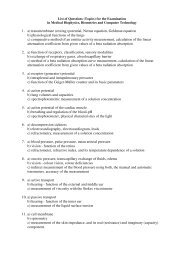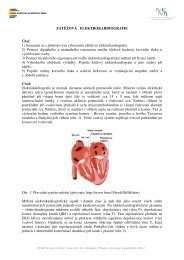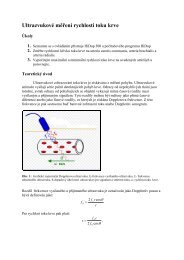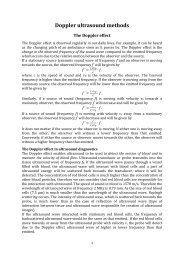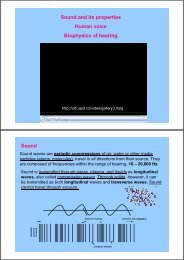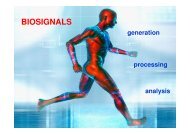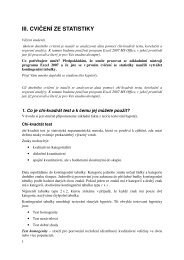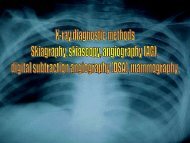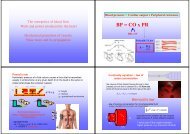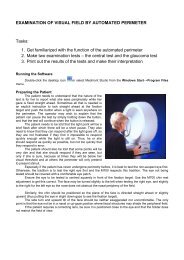Fluid balance and electrolyte distribution in human body.
Fluid balance and electrolyte distribution in human body.
Fluid balance and electrolyte distribution in human body.
Create successful ePaper yourself
Turn your PDF publications into a flip-book with our unique Google optimized e-Paper software.
Electrolytes<br />
• Magnesium (Mg 2+ )<br />
– 2 nd most abundant <strong>in</strong>tracellular <strong>electrolyte</strong>, 0.8-1.3 mmol/L <strong>in</strong> plasma<br />
• more than half is stored <strong>in</strong> bone, most of the rest <strong>in</strong> ICF<br />
(cytoplasm)<br />
• important enzyme cofactor; <strong>in</strong>volved <strong>in</strong> neuromuscular activity,<br />
nerve transmission <strong>in</strong> CNS, <strong>and</strong> myocardial function<strong>in</strong>g<br />
– Homeostatic im<strong>balance</strong><br />
• Hypomagnesemia - Associated with hypocalcemia <strong>and</strong><br />
hypokalemia, Neuromuscular irritability,Tetany, Convulsions,<br />
Hyperactive reflexes vomit<strong>in</strong>g, cardiac arrhythmias<br />
• Hypermagnesemia - Muscle weakness, Hypotension,<br />
Respiratory depression, Lethargy, drows<strong>in</strong>ess, Bradycardia<br />
Acid-Base Balance<br />
• Normal metabolism produces H + (acidity)<br />
• Three Homeostatic mechanisms:<br />
– Buffer systems - <strong>in</strong>stantaneous; temporary<br />
– Exhalation of CO 2 - operates with<strong>in</strong> m<strong>in</strong>utes; cannot<br />
completely correct serious im<strong>balance</strong>s<br />
– Kidney excretion - can completely correct any im<strong>balance</strong><br />
(eventually)<br />
• Buffer Systems<br />
– Consists of a weak acid <strong>and</strong> the salt of that acid which<br />
functions as a weak base





